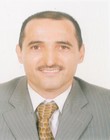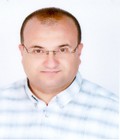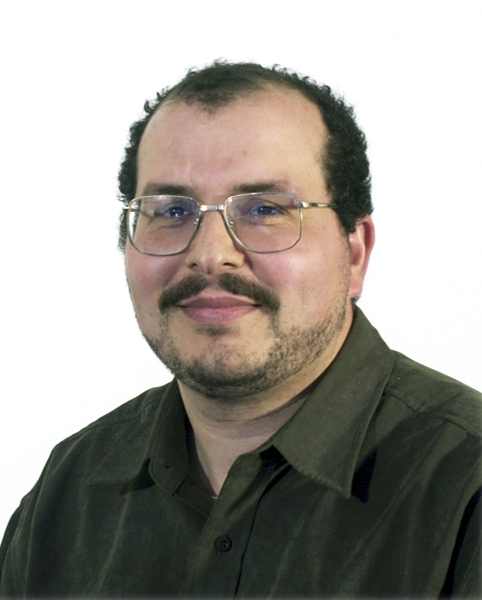
|
|
|
Click here to subscribe to tutorials ICM 2011 Tutorials include:
Abstract High Efficiency Video Coding (HEVC), also known as H.265, is a new standard under development jointly by the ISO and ITU-T. The Moving Picture Experts Group (MPEG) and Video Coding Experts Group (VCEG) have formed a Joint Collaborative Team on Video Coding (JCT-VC) to develop the new standard so that it is ready for publication in the middle of 2013. The new international standard, HEVC/H.265, will allow motion video to be stored on various storage media, as well as transmitted and/or received over existing and future networks, in a very efficient way. More specifically, HEVC/H.265 is expected to achieve essentially the same video quality as AVC/H.264while requiring as little as 1/3 of the bit rate. An HEVC/H.265 compliant encoder selects between inter and intra coding for block-based coding of each picture. Inter coding uses motion vectors for block-based inter prediction to exploit temporal statistical dependencies between different pictures. Intra coding uses various spatial prediction modes to exploit spatial statistical dependencies within a picture. Motion vectors and intra prediction modes are specified in HEVC/H.265 for a variety of block partitions and sizes of the picture to be encoded. The prediction residual, i.e., the difference between the original picture and the predicted picture, is then transformed using a multiple transforms to remove spatial correlation inside the residual blocks, before it is quantized, discarding less important visual information while forming a close approximation to the original picture. Finally, the motion vector(s)and/or intra prediction mode(s) are combined with the quantized transform coefficients, and then entropy-encoded using either variable length coding or arithmetic coding. HEVC/H.265 will adopt several new techniques that will permit compliant encoders to achieve high compression efficiency. Such techniques will include the use of:
We will present an overview of HEVC/H.265, including a brief history and a summary of the target markets. We will then provide a detailed presentation of all of the HEVC/H.265 major blocks, while also explaining the new standard’s sources of high compression efficiency. We will conclude our presentation with a summary of objective and subjective video coding results that will illustrate the advantage(s) of the new standard over its predecessors. Qualifications of the instructors
Then, Dr. Kossentini led a team of market
researchers and technology leaders, whose aim was to
create encoder product development strategies given
the market demands and the available encoding
technologies. Dr. Kossentini also continued to serve
as the General Manager of UB Video Tunisia, a
Company he founded in 2003, which was acquired by
Cisco in February 2006.
He was a co-funder of Ubvideo Tunisia in the
techno-pole El-GHAZLA Tunis, an international leader
company in the domain of video coding technology. He
is a member of a research team since 1994 at (LETI -
Sfax) in the domain of electronics and information
technology, and a reviewer in many international and
national journals and conferences.
RFID Technology: A methodology of evaluating its impact through modelling and simulation Background knowledge expected of the participantsNo background knowledge is required of the participants as a primer on RFID technology will be presented in the tutorial. A presentation of RFID: Radio frequency identification (RFID) has been considered as “one of the most pervasive computing technologies in history” (Roberts, 2006 p. 56). However, RFID concept is not new. It is a wireless Automatic Identification and Data Capture (AIDC) that uses radio waves to identify “tagged” product without human intervention. RFID adoption is moving from niches applications such as antitheft systems, luggage tracking systems in airports, electronic toll collection systems (Smith and Konsynki, 2003), mobile commerce (Fosso Wamba et al., 2007) to more broader applications such as warehouse and supply chain optimization (Lefebvre et al., 2006). ObjectivesThe main objective of the tutorial is to present an academic methodology that uses modelling and simulation to evaluate the impact of RFID technology on organisations. A primer on the technology will also be presented as if to widespread use is rather recent. Moreover, we are going to discuss some challenges and problems which can arise during a RFID technology implementation. Qualifications of the instructors
He is currently a full Professor in the Department
of Electrical Engineering at the Université de
Moncton and a Canada Research Chair holder in
“Optics in Information and Communication
Technologies”. He is an IEEE senior member and a
registered professional engineer in New-Brunswick.
He is among others associate editor of the IEEE
Canadian Review, member of the editorial boards of
Wireless Communications and Mobile Computing - John
Wiley & Sons - and of Journal of Computer Systems,
Networking, and Communications - Hindawi Publishing
Corporation. His research interests are in optical
telecommunications, Wireless Communications,
diffraction, fiber components, optics of the eye,
RFID, Human-Machine interaction and E-Learning.
Current-Mode Analog Processing: Circuits Design and Applications Background knowledge expected of the participantsThe tutorial is appropriate for participants with background and knowledge in basic electronics including biasing, modelling, circuit analysis, and frequency response and some experiences in the design of basic analog integrated circuits. Objectives The main objective of this tutorial is to present the current mode approach and techniques currently used in the design of CMOS analog integrated circuits and systems. First, a comprehensive introduction to the current mode approach and voltage mode approach will be discussed. The main CMOS Properties of the current conveyors, differential transconductance and transimpedance circuits will also be done. The different techniques proposed in literature to design different voltage controlled current sources (VCCS) are presented (including the consideration of huge and controlled transconductor gain). In a second part of the tutorial, we will focus on a number of applications including the recent design of a 13.56MHz RFID CMOS transceiver, High frequency current mode controlled CMOS oscillators and other Low-voltage and low-power applications based CMOS inverters in transconductance mode. Qualifications of the instructors
Since September 2007, Prof. H. Barthélemy joined the University of Sud-Toulon-Var, France. Since 2005 he has been the managing director of the Integrated Circuits Design Team at the Institut of Matériaux Microélectronique and Nanosciences de Provence (IM2NP). The team, located in Toulon and Marseille, currently counts 10 Researchers and 12 PhD students and is involved in research projects connected with academy and industry. Hervé Barthélemy his member of the project commission of the french “pôle de compétitivité SCS” (Solutions Communicantes. Sécurisées) and he regularly serves as expert for the French National Research Agency (ANR). He is the author or co-author of multiple publications in international journals and conference proceeding. He is the co-author of an article in the Encyclopaedia of Electrical and Electronic Engineering published by Wiley (USA) in 1999 and co-authored US patents. He has served as Track Chair for the IEEE NEWCAS, MIDWEST and ICECS conferences. He was also the Technical Program co-Chair for the IEEE International conference NEWCAS 2011. Hervé Barthélemy is on the editorial board for the Analog Integrated Circuits and Signal Proceecing Journal and he serves as an associate editor for IEEE Transactions Circuits & Systems II for the period 2011-2012. He research interests include analog signal processing, Analog RF, Analog CMOS Instrumentation and wireless sensors.
His research interests are mainly in the design of full custom ASICs and analog integrated circuits. He integrated in the same time the Integrated Circuits Design Team at the Institut of Matériaux Microélectronique and Nanosciences de Provence (IM2NP). He worked on different research project with academy and industry.
|
|
Important Dates
Paper
Submission
|
 |
 |
 |
 |
 |
 |
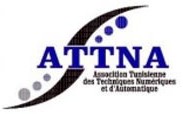 |
 |
 |
 |
|
 |
 |
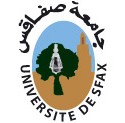 |
|

